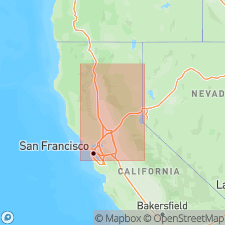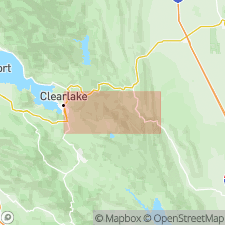
- Usage in publication:
-
- Leesville Sandstone Member
- Modifications:
-
- Redescribed
- Revised
- AAPG geologic province:
-
- Sacramento basin
Summary:
[Leesville Member of] Little Valley Formation of Lawton (1956) is redescribed as Leesville Sandstone Member and assigned as basal member of Lodoga Formation (new). Described as pale olive-gray, thin-bedded, fine- to coarse-grained sandstone.
Source: GNU records (USGS DDS-6; Menlo GNULEX).

- Usage in publication:
-
- Leesville Member
- Modifications:
-
- Overview
- Dominant lithology:
-
- Sandstone
- Shale
- AAPG geologic province:
-
- Sacramento basin
Summary:
Named by J.E. Lawton (1956, PhD thesis, Dissertation Abstracts, v.16 no.10 p.1885) for rocks in Morgan-Wilbur area, Lake, Yolo, and Colusa Cos, CA, as lower member of Little Valley Formation. Consists of predominantly buff, light-gray or yellow-brown sandstone, with interbedded shale and silty shale and occasional conglomerate. Is from 600 to 1800 ft thick. Conformably overlies Grizzly Creek Member of Crack Canyon Formation of Lawton (1956). Conformably underlies Round Mountain Member of Little Valley Formation of Lawton (1956). Age given as Early Cretaceous.
Source: GNU records (USGS DDS-6; Menlo GNULEX).
For more information, please contact Nancy Stamm, Geologic Names Committee Secretary.
Asterisk (*) indicates published by U.S. Geological Survey authors.
"No current usage" (†) implies that a name has been abandoned or has fallen into disuse. Former usage and, if known, replacement name given in parentheses ( ).
Slash (/) indicates name conflicts with nomenclatural guidelines (CSN, 1933; ACSN, 1961, 1970; NACSN, 1983, 2005, 2021). May be explained within brackets ([ ]).

